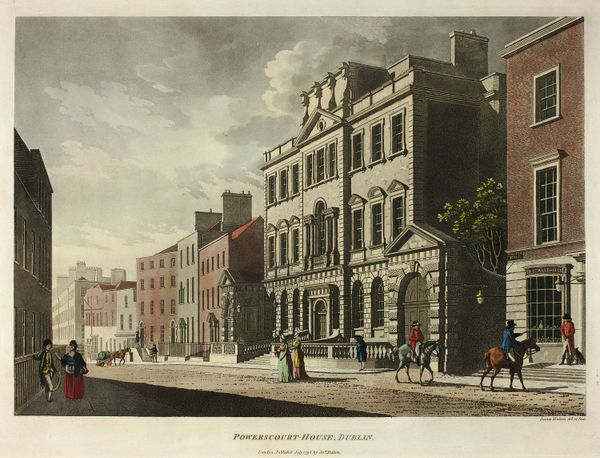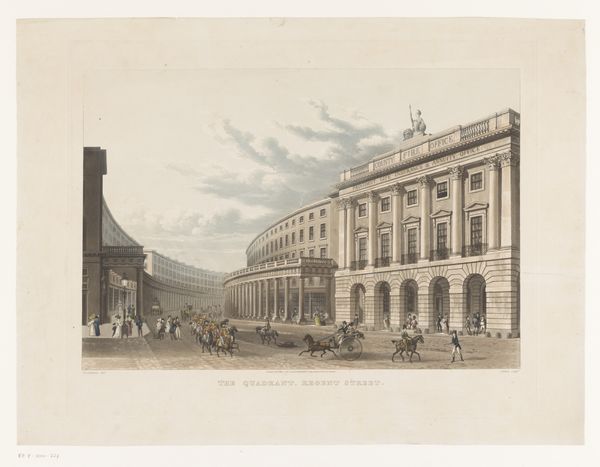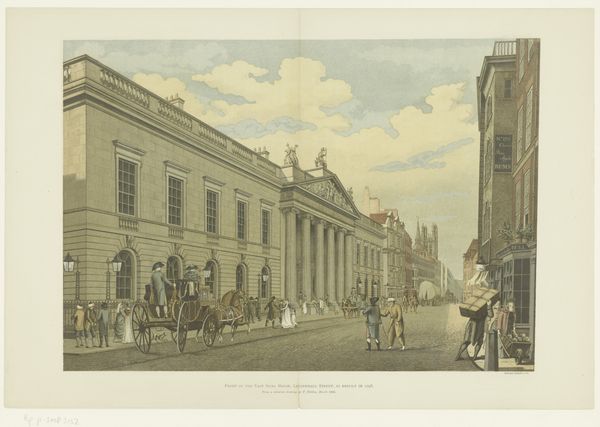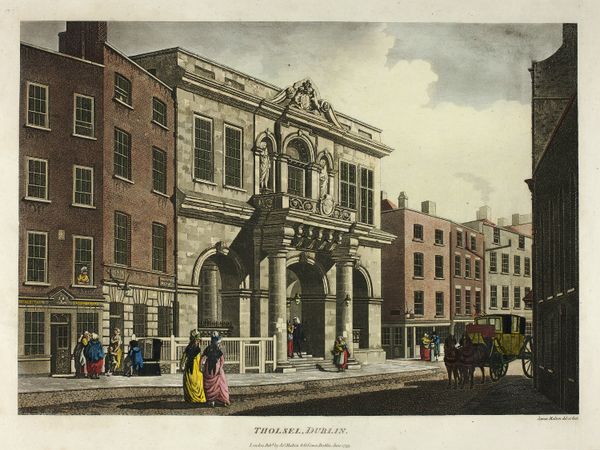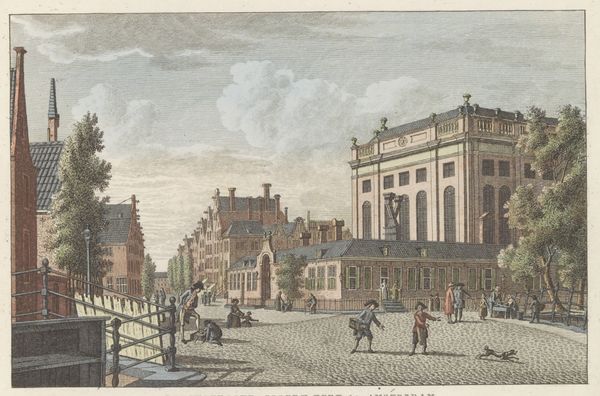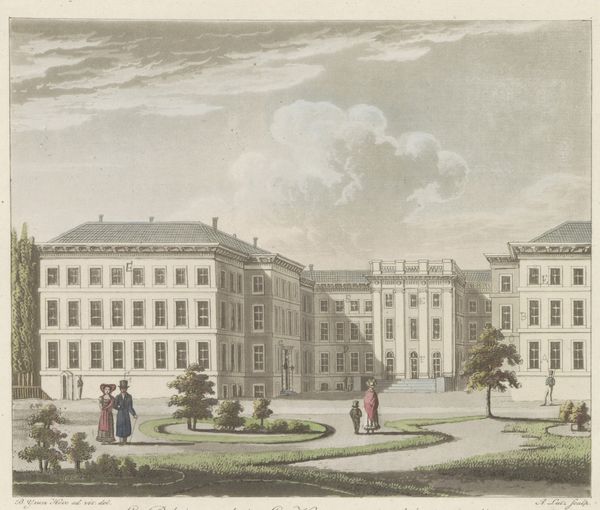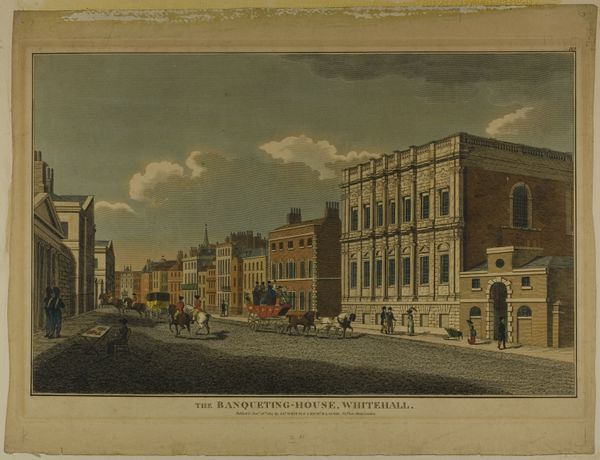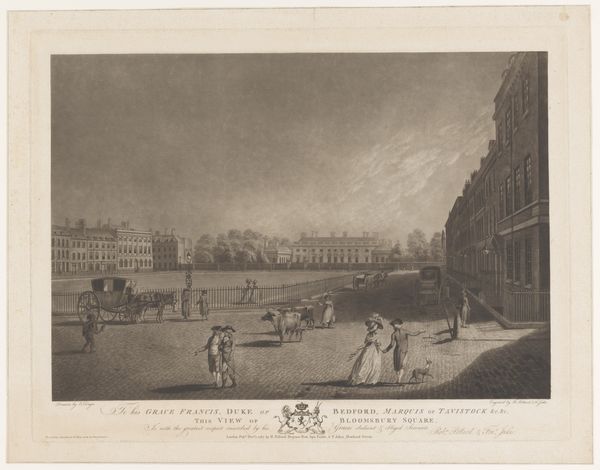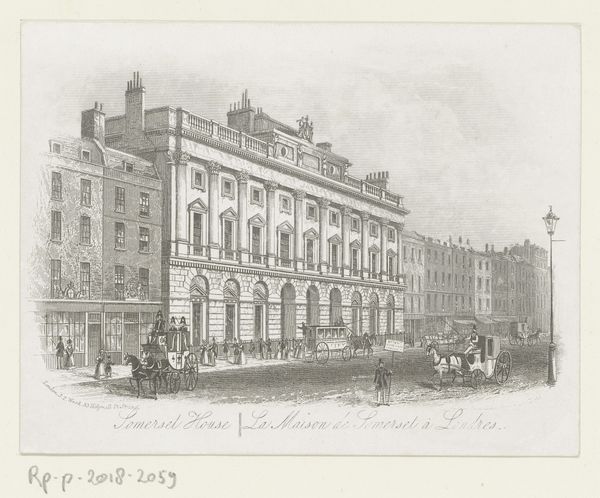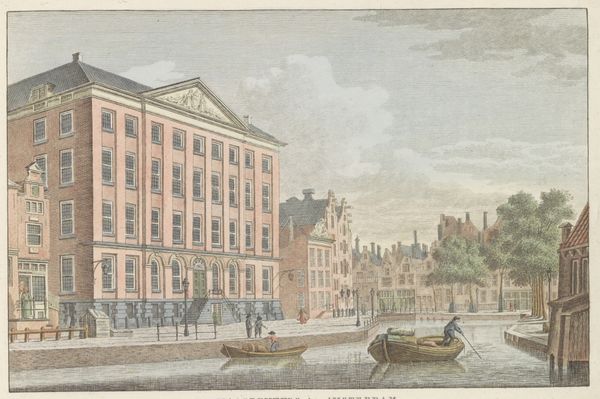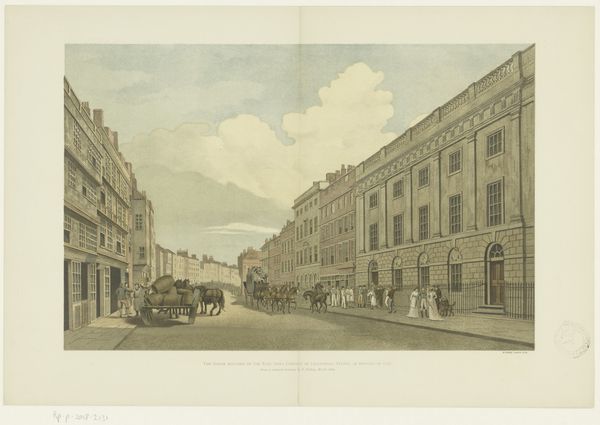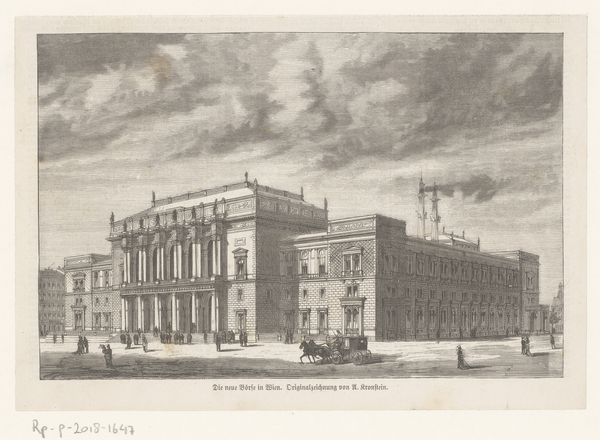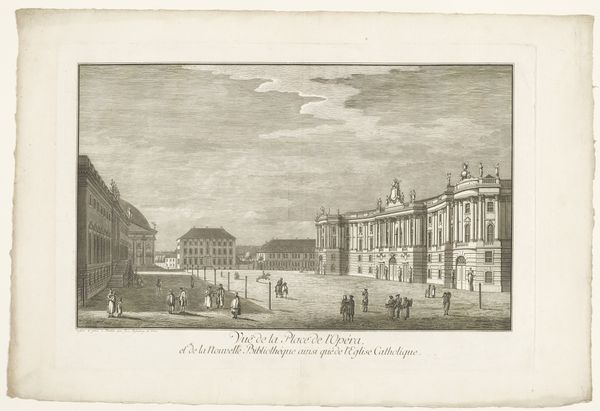
drawing, print, etching, paper, architecture
#
drawing
#
neoclacissism
# print
#
etching
#
paper
#
cityscape
#
history-painting
#
architecture
Dimensions: 263 × 377 mm (image); 315 × 425 mm (plate); 420 × 550 mm (sheet)
Copyright: Public Domain
James Malton’s “Trinity College, Dublin” is an aquatint and etching, made sometime around the turn of the 19th century. Aquatint is a printmaking technique that simulates the effect of watercolor washes, and etching involves using acid to corrode lines into a metal plate, which is then inked and printed. Look closely, and you’ll see how the etching defines the crisp architectural details of Trinity College, while aquatint provides the tonal variations creating a sense of light and atmosphere. It is a reminder that all images are constructed, and that the architecture itself was also a site of intense labor and production. The technique allowed for multiple impressions to be made and distributed widely. This speaks to the growing interest in picturesque views and the rise of print culture at the time, alongside the social and economic contexts of 18th-century Dublin, reflecting both the city's architectural grandeur and the mechanics of its representation. Malton's print invites us to consider the intersections of art, craft, and industry, as well as the ways in which images shape our perceptions of place and history.
Comments
No comments
Be the first to comment and join the conversation on the ultimate creative platform.
